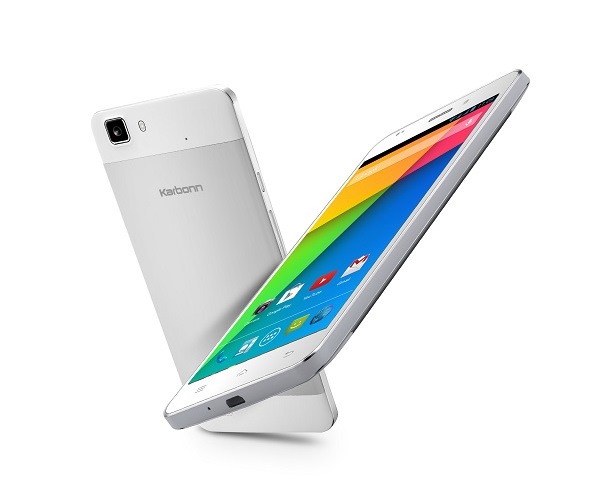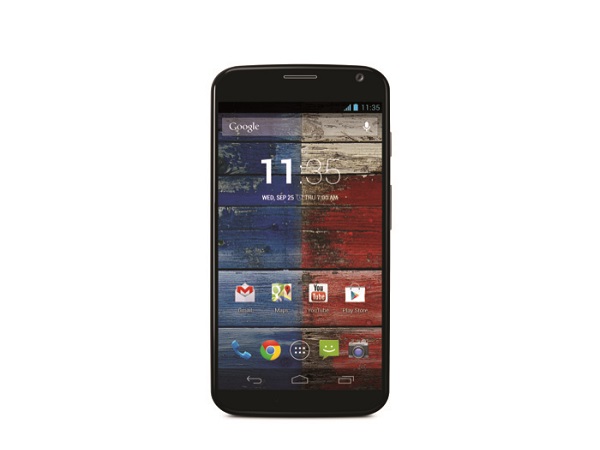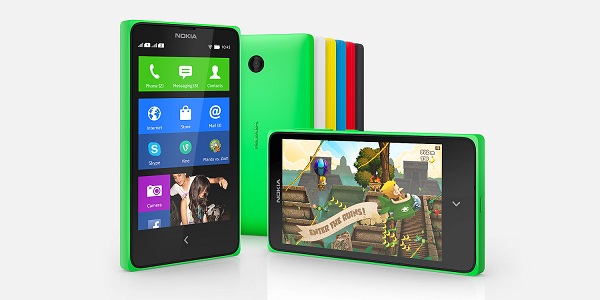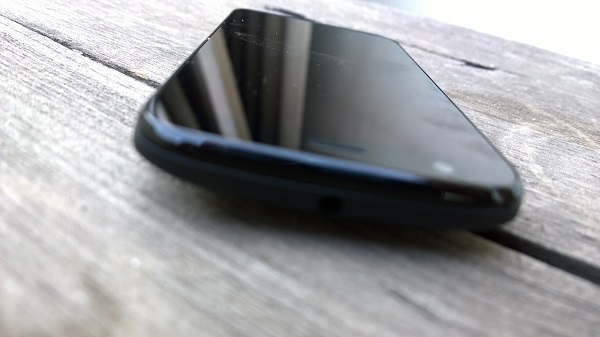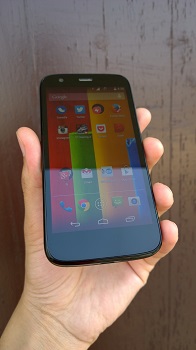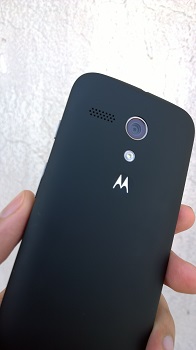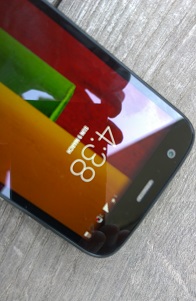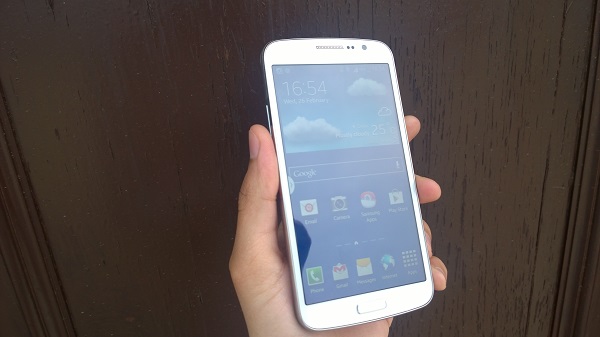A good screen, decent audio and camera come with Samsung’s latest release, but will the phone compete well with rivals?
by Manik Kakra
Samsung’s Galaxy Grand was a hit in the mid-rane segment. Many were attracted by the large-screen size and decent package it provided, but were left unsatisfied by the laggy 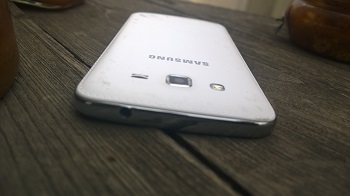 performance and below average battery backup. With Grand 2, Samsung has made a few changes, so let’s see how good the Galaxy Grand 2 really is.
performance and below average battery backup. With Grand 2, Samsung has made a few changes, so let’s see how good the Galaxy Grand 2 really is.
Hardware and design
Samsung’s Galaxy Grand 2 (G7102) follows pretty much the same form factor and material like the Grand and S4. The square looks combined with average matte plastic material make the Grand 2’s build and design. Having slightly thinner bezels than its predecessor is certainly a welcome change.
On the front is a raised Centre (Home) Button with chrome-like ring around it, Back button on the right, and Menu/Option on the left. Above the 5.2-inch screen are the Duos branding, front-facing camera and the usual sensors.
Things get interesting on the back. Samsung has gone with the same faux-leather, seen on the Note 3, back cover on the Grand 2. It looks decent, but as soon as you hold the device and start checking it, you get a clear idea that this is plastic and not leather. With stitching surrounding the back’s boundaries, it does look nice. On the rear is the 8 Mp camera along with an LED flash, loudspeakers grill right next to them, and Samsung branding towards the middle.
On the sides, there are the Volume rockers on the left, and Power/Lock key on the other side. The sides have a silver line across them and the buttons follow the same layout. These buttons are raised enough to give you a good feedback on being pressed. Again, the material and finish of these buttons could have been better. On the top, you have the usual 3.5mm headset jack, while the bottom sports the microUSB port.
Pulling off the rear cover reveals the 2,600mAh battery cell, two SIM slots and the microSD card slot, apart from circuitry, other bits and pieces of the camera module.
Camera
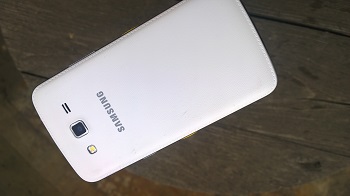 The Grand 2 boasts an 8 Mp camera along with an LED flash. The Camera app comes with a host of modes, settings and editing options, which are not difficult to use. Samsung has done a good job in the Camera UI department, making most of the settings accessible without too many taps. See a few sample images here.
The Grand 2 boasts an 8 Mp camera along with an LED flash. The Camera app comes with a host of modes, settings and editing options, which are not difficult to use. Samsung has done a good job in the Camera UI department, making most of the settings accessible without too many taps. See a few sample images here.
The camera performs well. You get clear, decent colours, while low-light performance isn’t too impressive; the camera is more than capable of taking good shots in decent conditions.
Speakers
The speakers on the Grand 2 are pretty loud and audio is mostly clear. In-ear with the default headsets is clear, quite loud and doesn’t disappoint.
Screen
Coming to the 5.2-inch 1280×720 screen, it doesn’t let you down. The colours appear quite vivid, with a much higher resolution than the original Grand (and rightly so), and videos come out richer. The screen is definitely one thing that needed to be improved and Samsung seems to have done exactly that without over-sharpening the colours.
Call quality
As far as call quality is concerned, there’s nothing to complain about. I didn’t notice any unusual network reception, and was satisfied with the call and network reception of the phone.
During my usage, I got about 20 hours of backup from the phone battery on a single full charge. With sync on, lots of emails, Twitter, (brightness at 50 per cent) a few videos and calls, you would have to charge the device within a day, more often than not.
Software and performance
The Grand 2 runs on Android 4.3 Jelly Bean, along with Samsung’s TouchWiz UI on top. The overall look and feel of the whole UX very similar to what we have seen on the Note 3  and S4. You get five Home screens by default, and can customise them as and when you want – the usual Android manner.
and S4. You get five Home screens by default, and can customise them as and when you want – the usual Android manner.
Swiping top from the bottom of the screen opens up My Magazine, which Samsung’s style of Flipboard – giving you personalised content from your pre-selected online publications. Seen previously on the Note 10.1 2014 Edition, it is a good idea and helpful when you just want to glance through the entire day’s updates for a day.
You can access most of the settings right from the drop-down Menu along with your notifications. Lock screen, which, too, can be customized, gets unlocked by swiping in any direction (default way). App drawer, multi-app view and other nitty gritties remain the same that we have been used to seeing on Samsung’s Galaxy devices. You get around 5.5 GB of storage space (8 GB in total), and can expand storage via a microSD card.
This phone is a much better performer than the original Grand 2. After a few days of usage, you will realise there is a definite improvement in smoothness, resulting in better user experience. Having said that, we have Samsung’s own devices with better performance like the Note 3, but this comparison won’t be a fair one. TouchWiz does take its toll, but it certainly gives the user a few useful additions – Camera app, app folders, etc. – of stock Android. Google Now has been there for quite some time now and Samsung’s devices also come with the proprietary S Voice. It is basically a voice assistant that is far from being integrated into the OS and helpful than Google Now. I hardly ever used it, mainly because it recognised my voice less frequently and the overall experience was just average.
Concluding this review, the Grand 2, with its good screen, decent audio and camera, does bring a lot of things to the sub 23k phone range. Performance isn’t really bad, but we could have had a much better material quality, especially now that Samsung admits slimy plastic isn’t always the way to go with its Galaxy range of devices. There are a few worthy devices that the phone competes with – Nexus 4, Lumia 820 – and it will be interesting to see if Samsung is able to continue its growth in this product range this year.
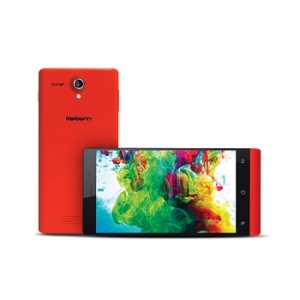 Coming to the other two phones – the Karbonn Titanium Octane Plus and Karbonn Titanium Octane – both are pretty similar in hardware specifications, except the Plus model is a bit on the beefier side. Karbonn’s Titanium Octane Plus features a 5-inch full HD screen. RAM. Under the hood, there’s a MediaTek 6592 chipset (1.7 GHz octa-core processor), and 2 GB of RAM.
Coming to the other two phones – the Karbonn Titanium Octane Plus and Karbonn Titanium Octane – both are pretty similar in hardware specifications, except the Plus model is a bit on the beefier side. Karbonn’s Titanium Octane Plus features a 5-inch full HD screen. RAM. Under the hood, there’s a MediaTek 6592 chipset (1.7 GHz octa-core processor), and 2 GB of RAM.